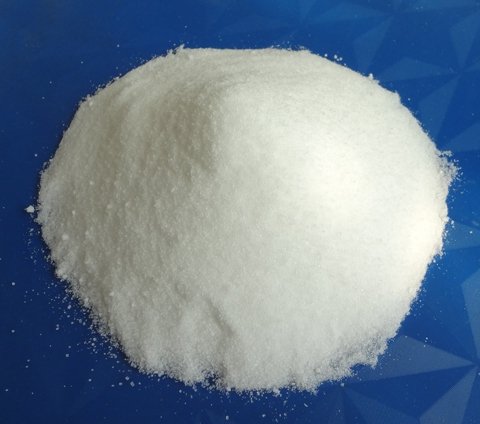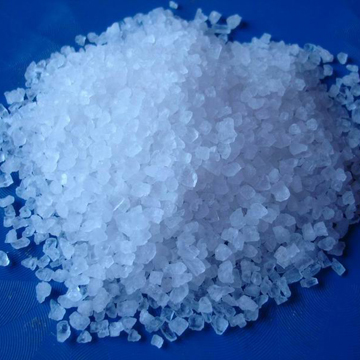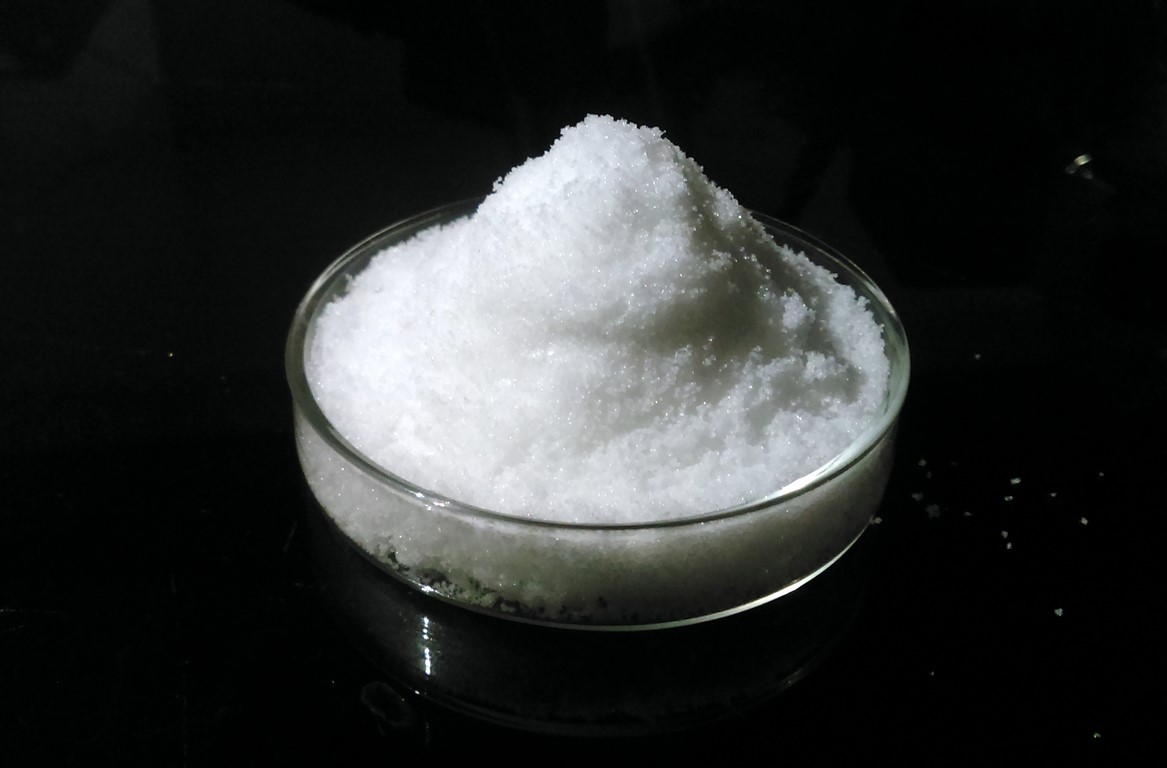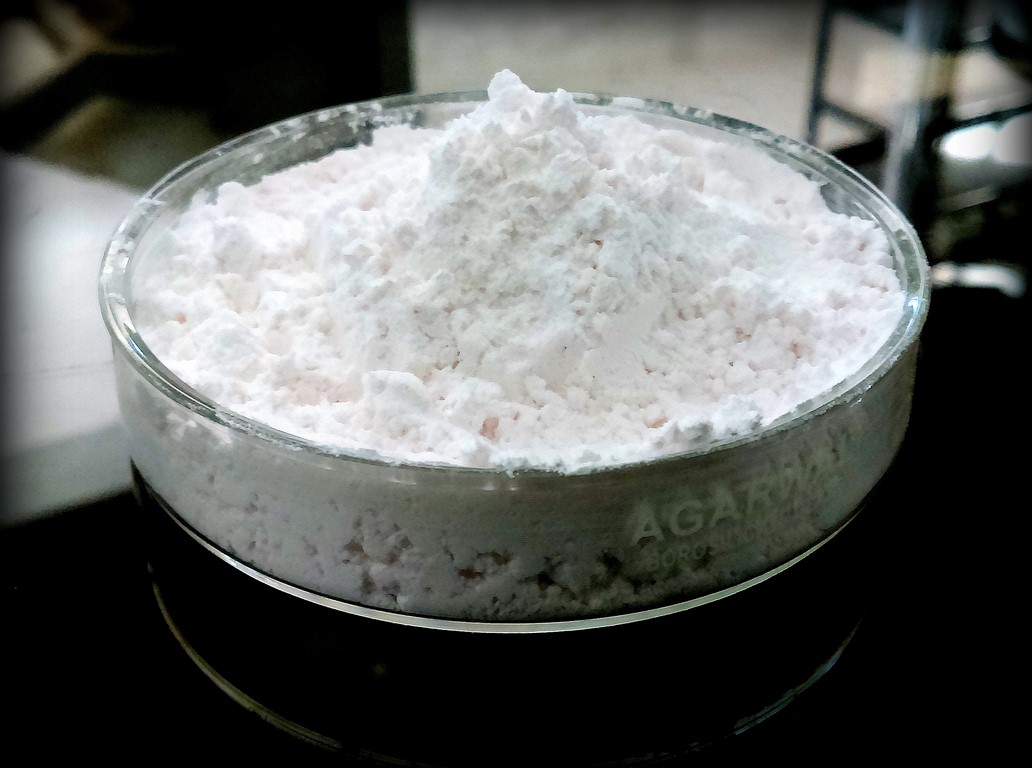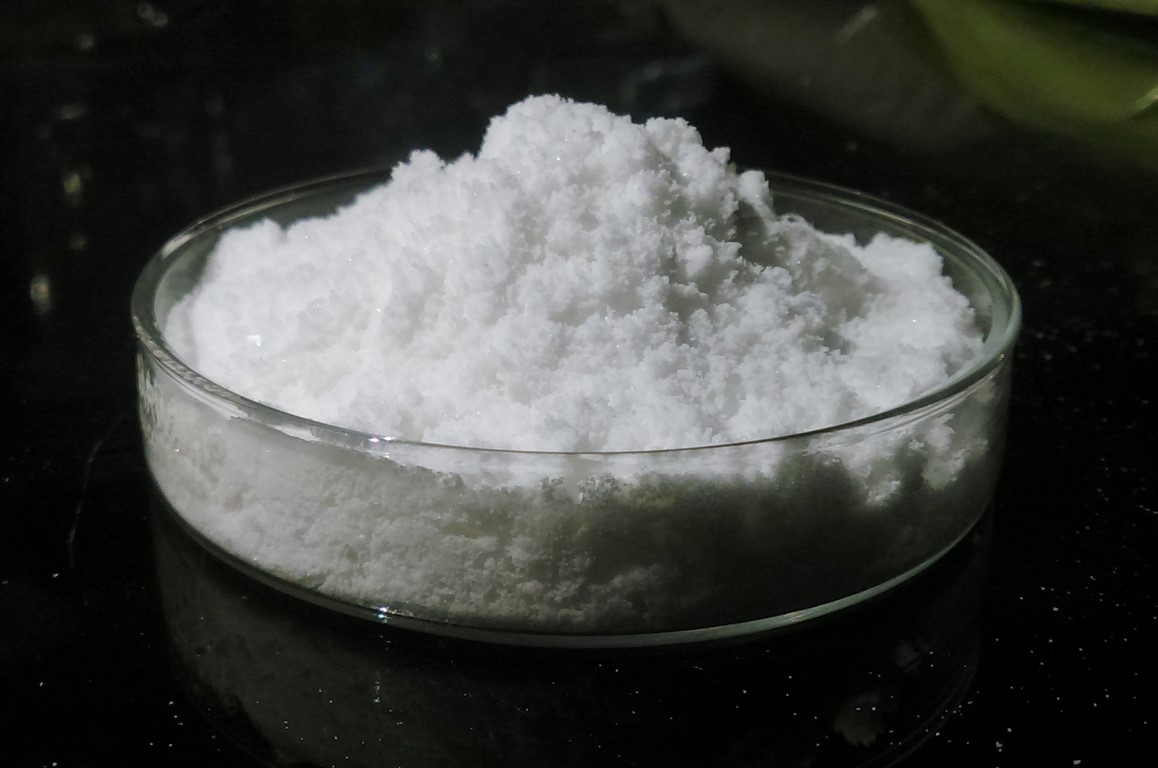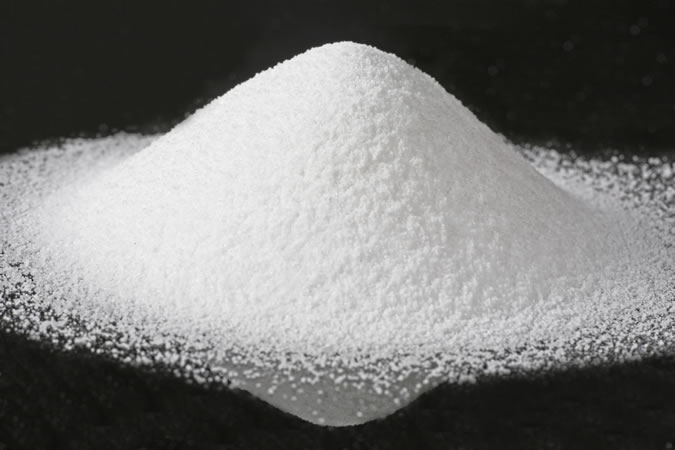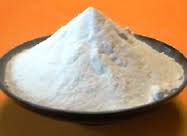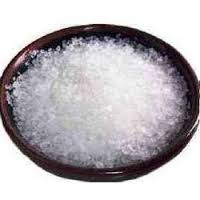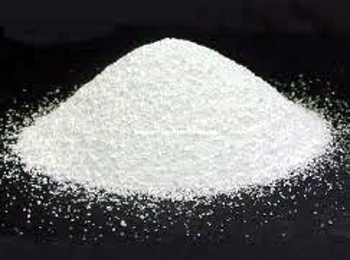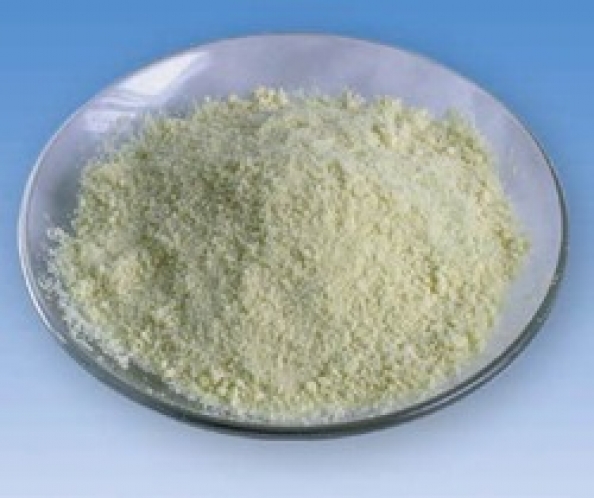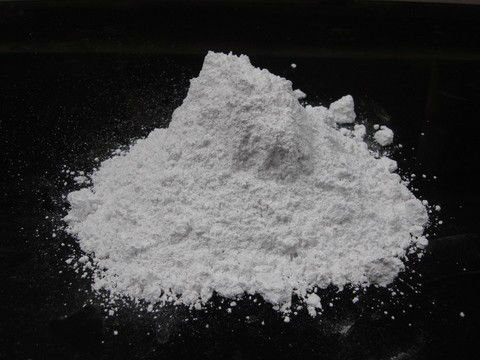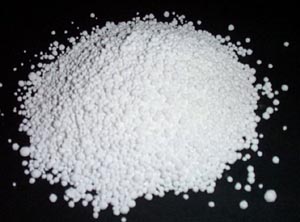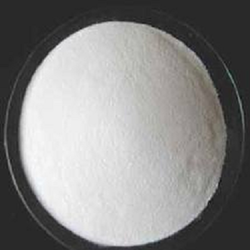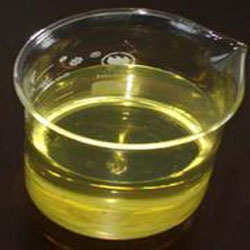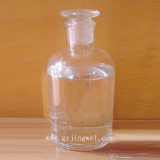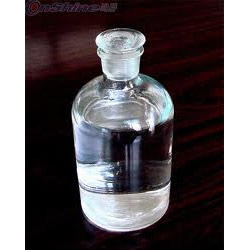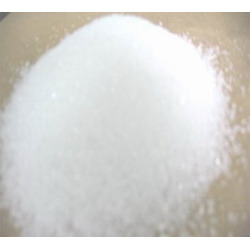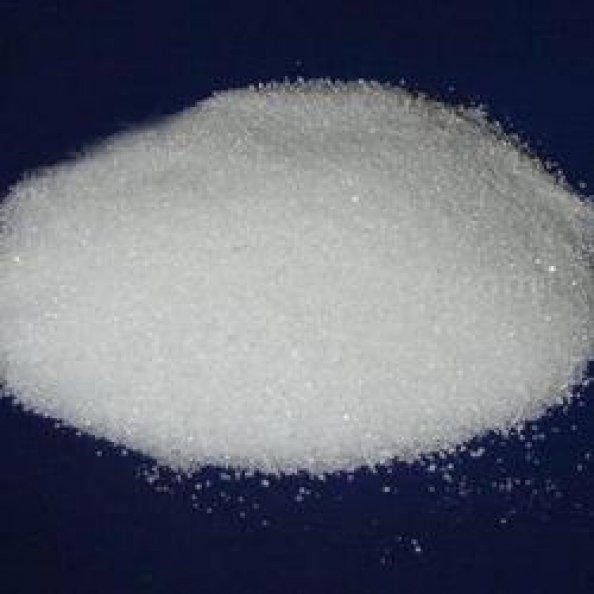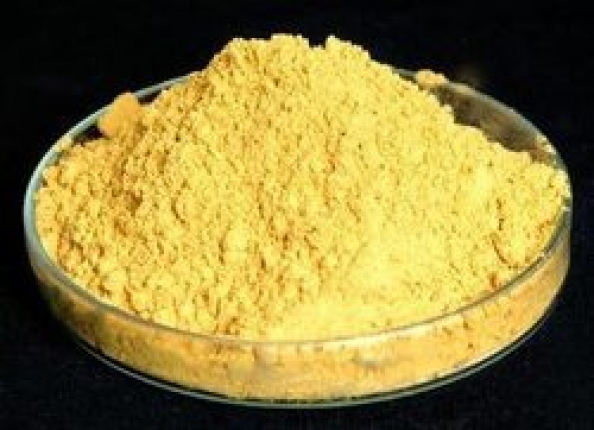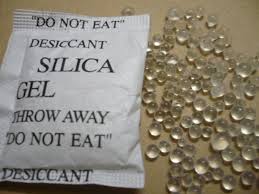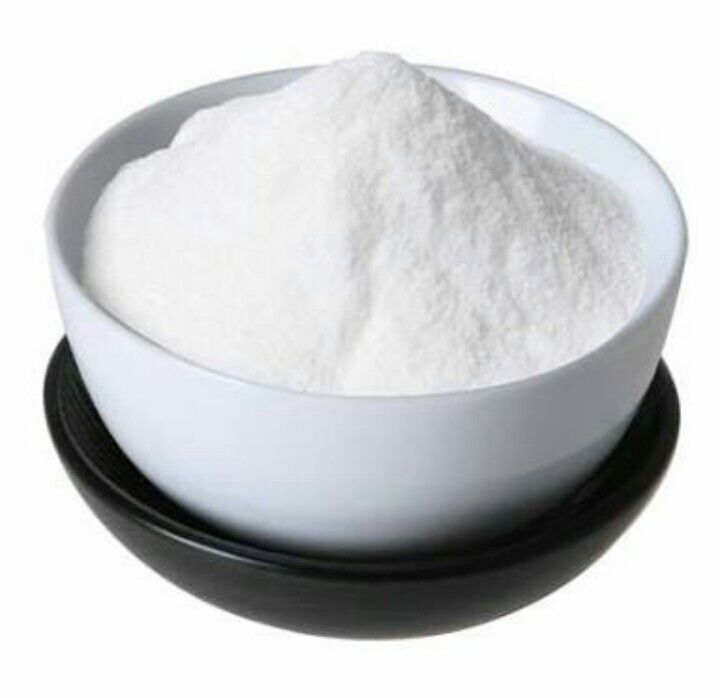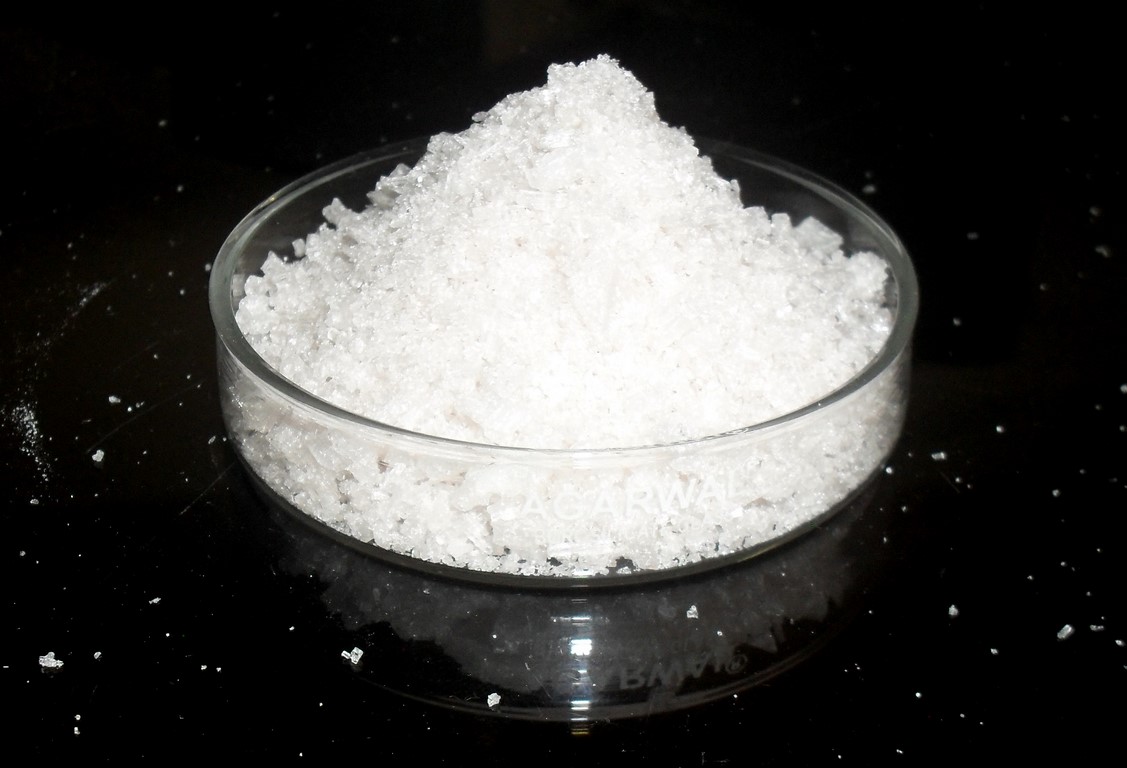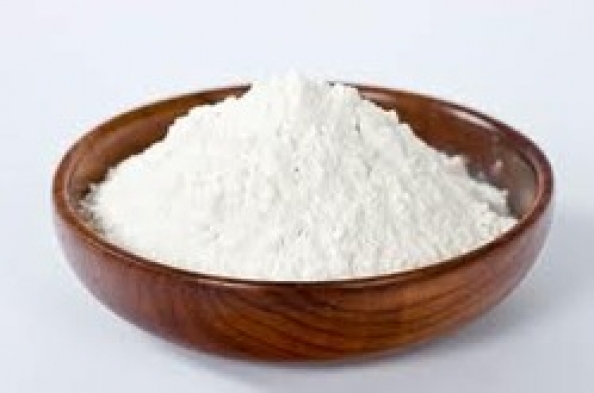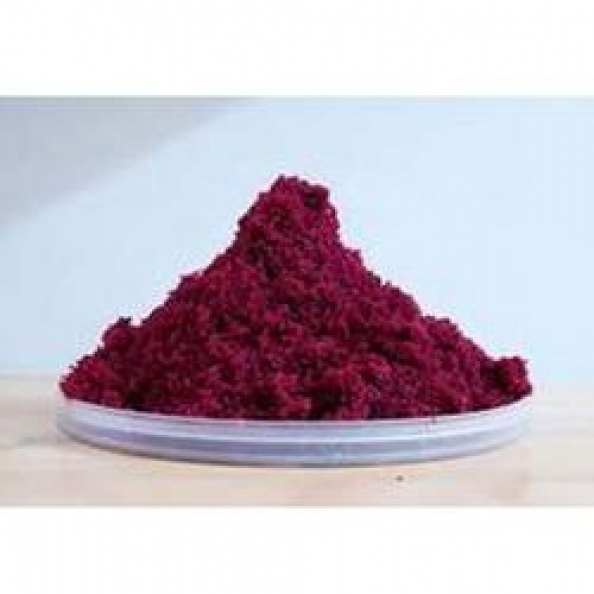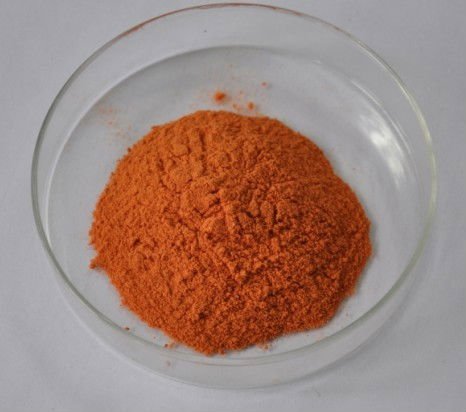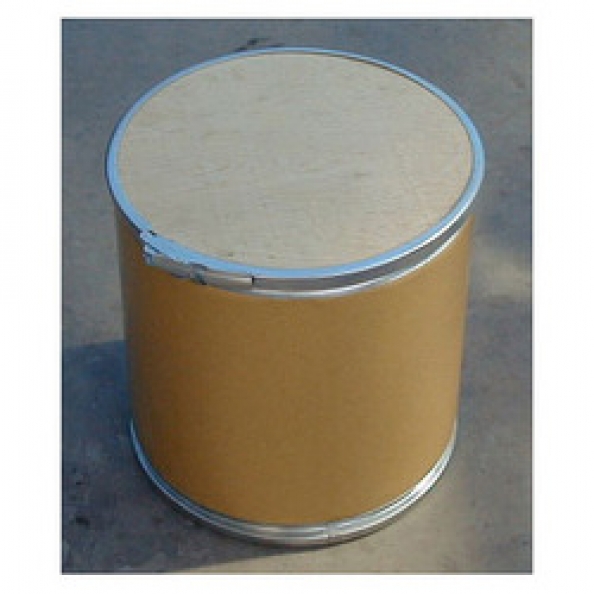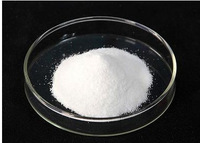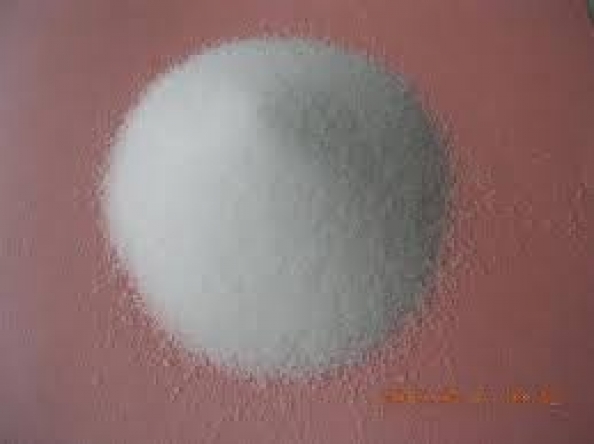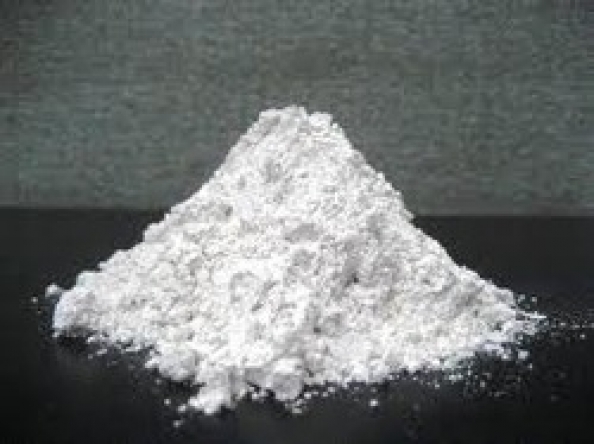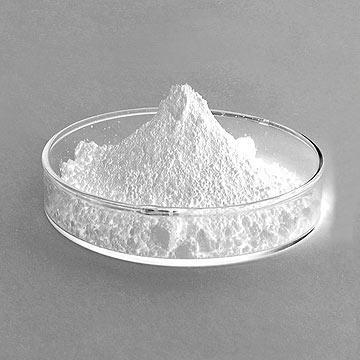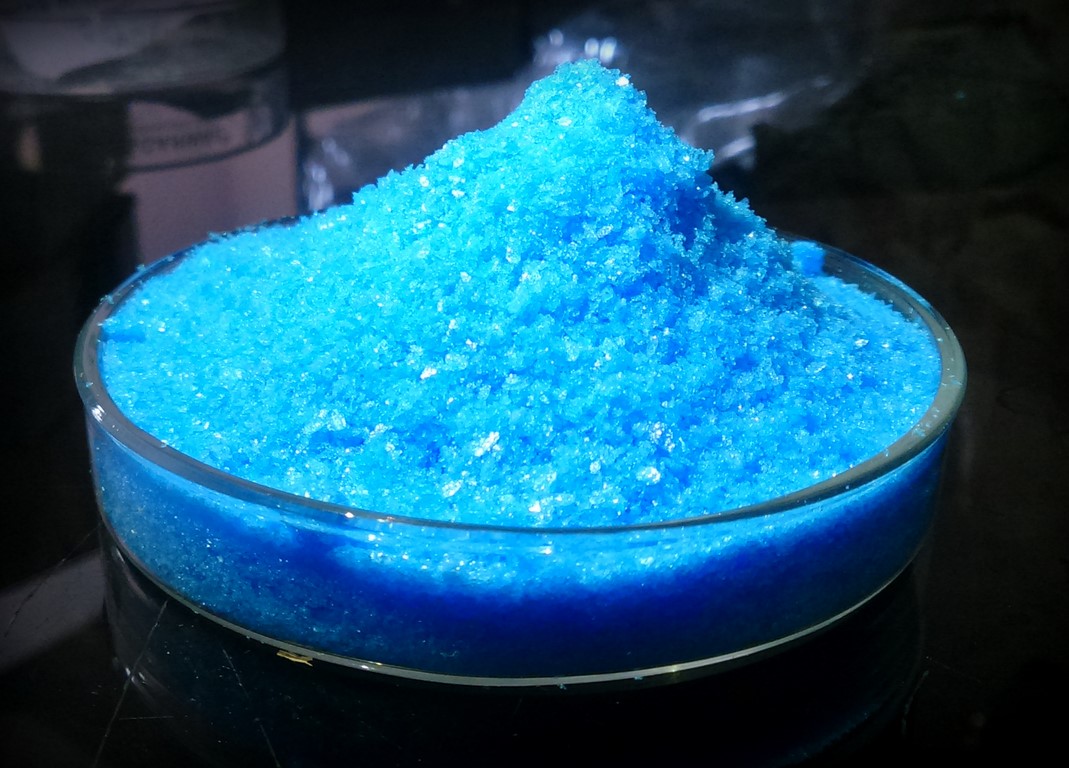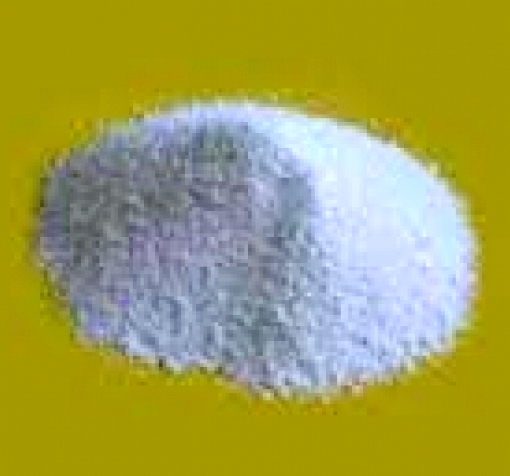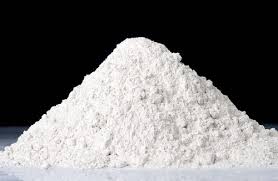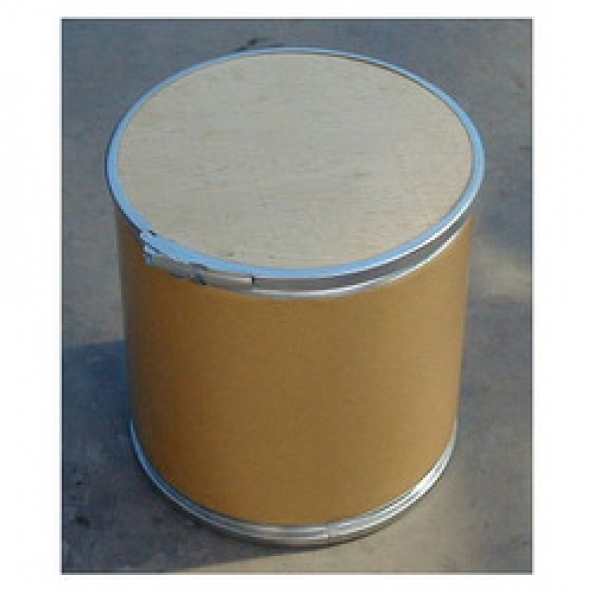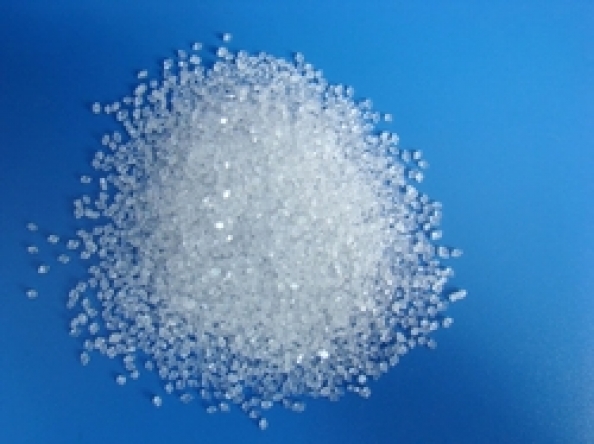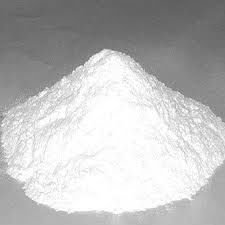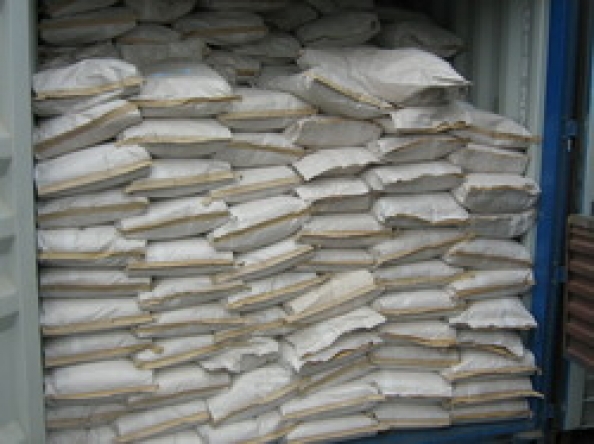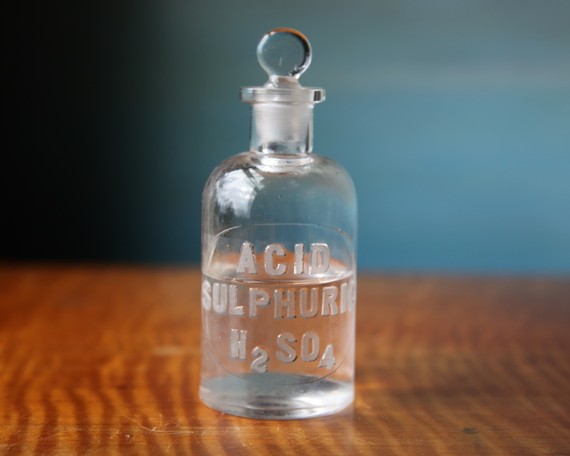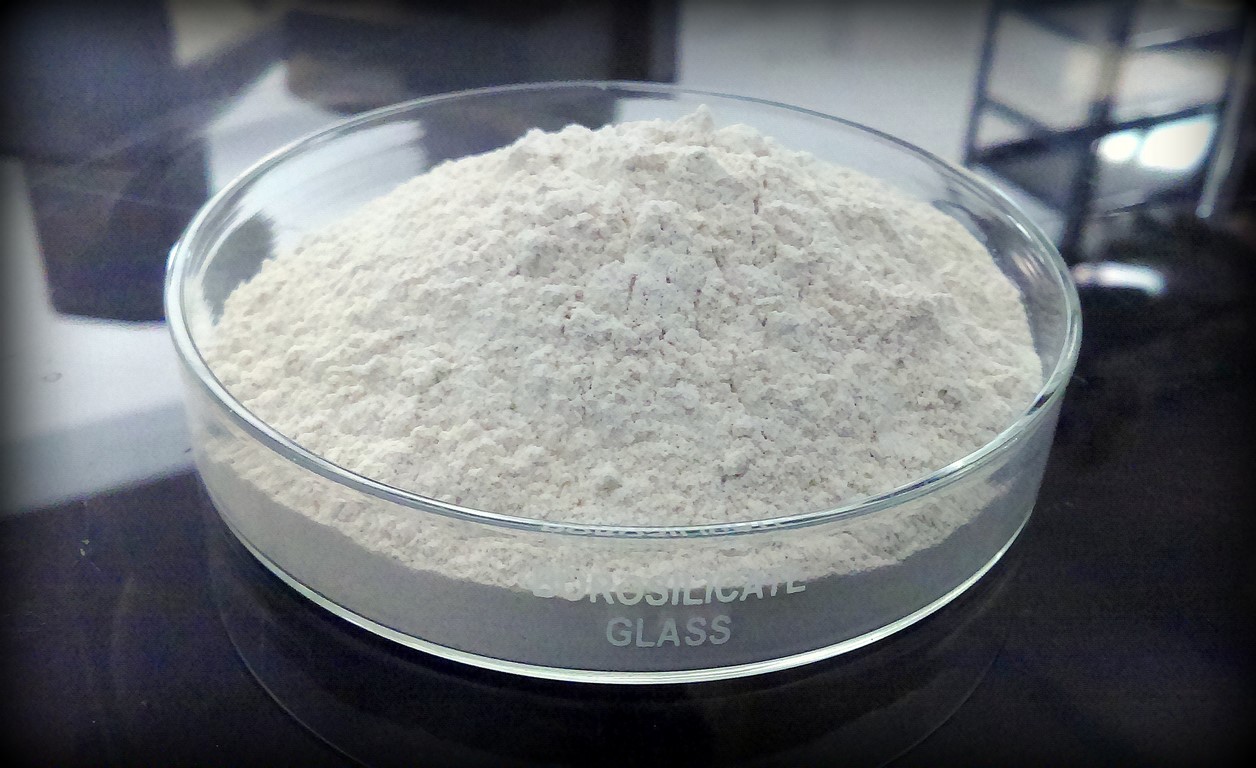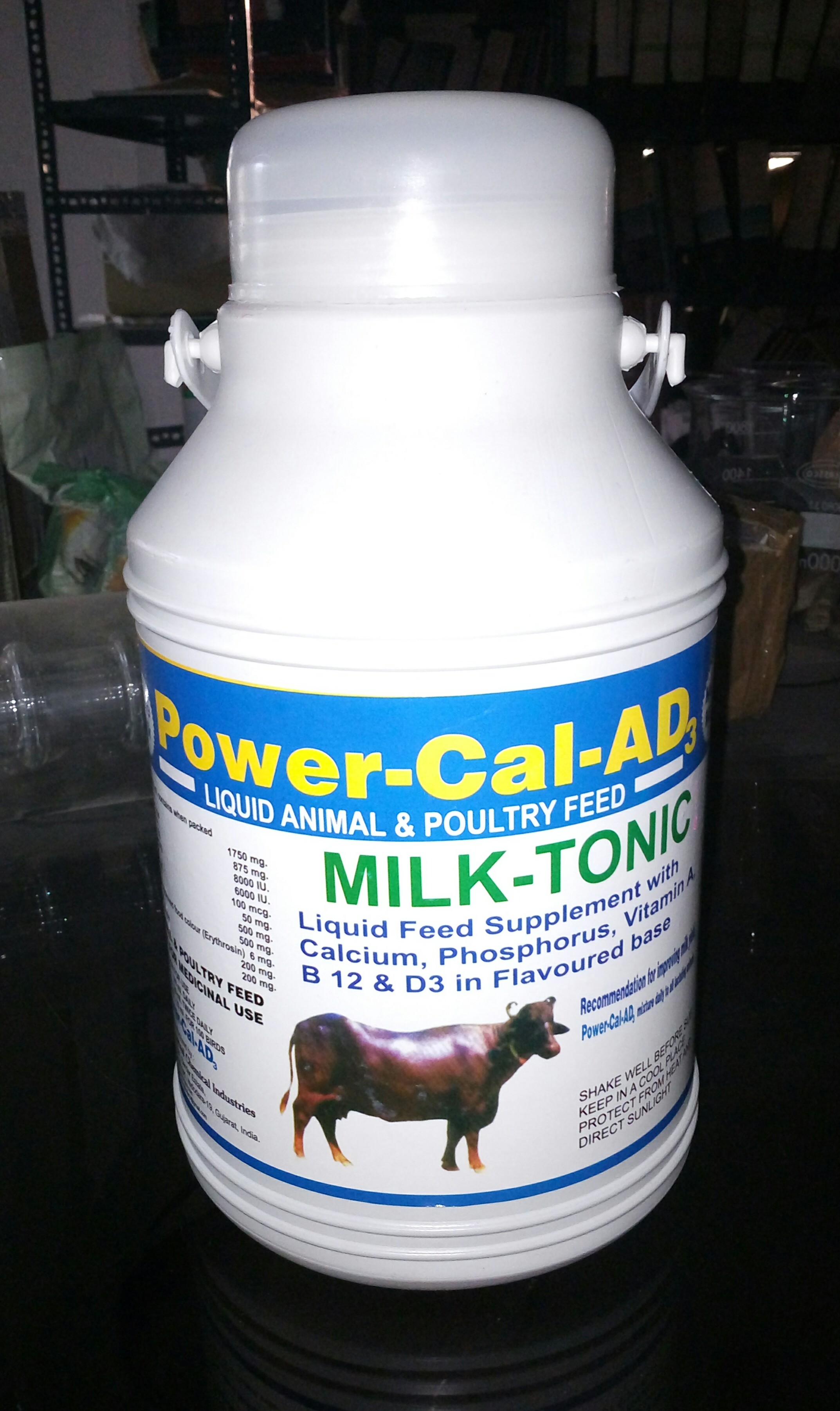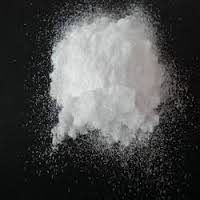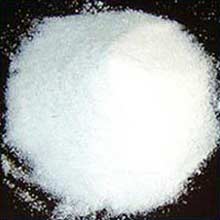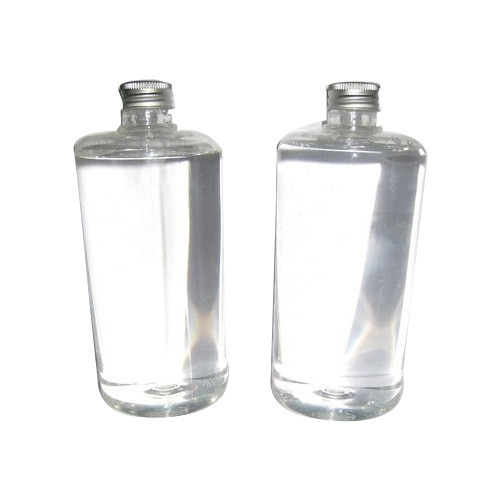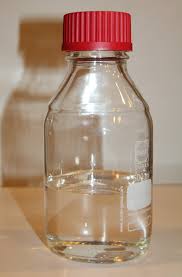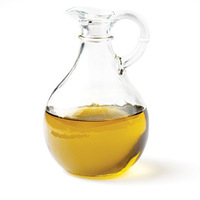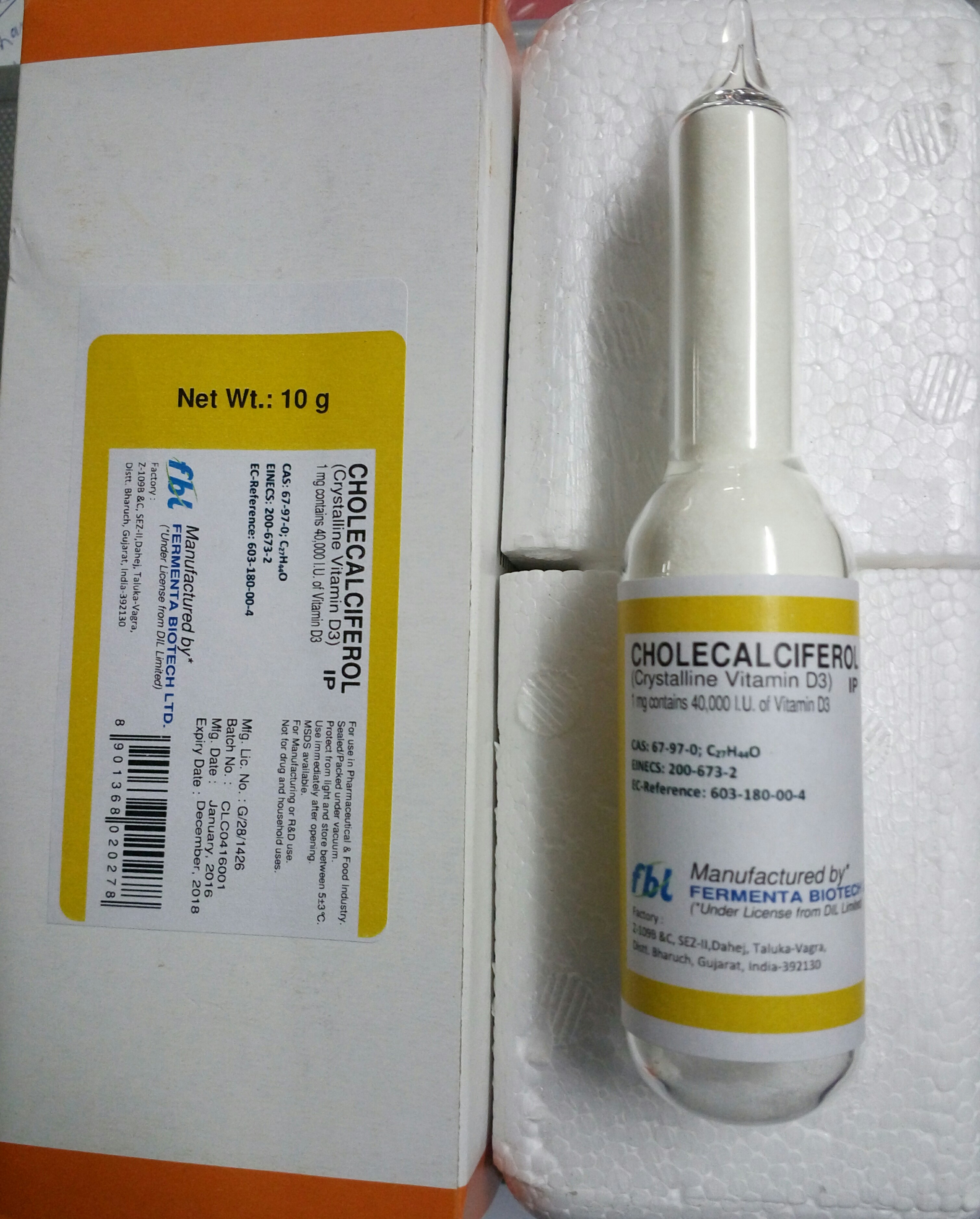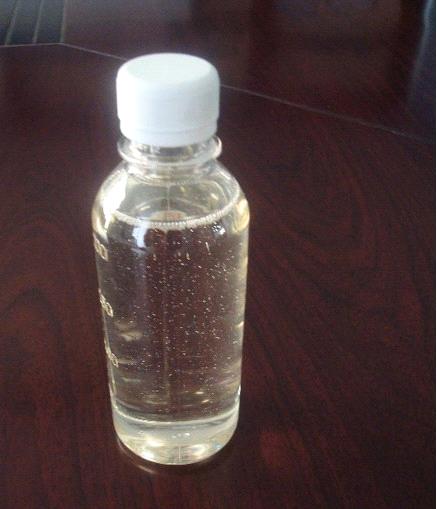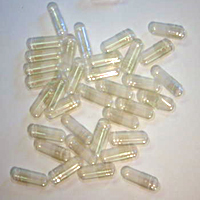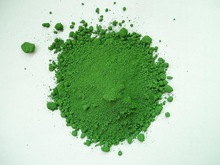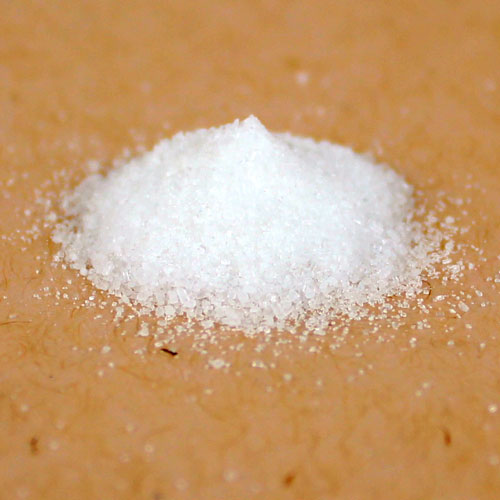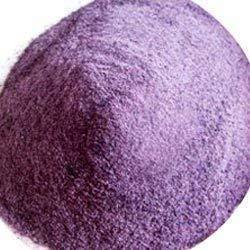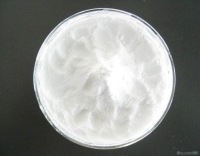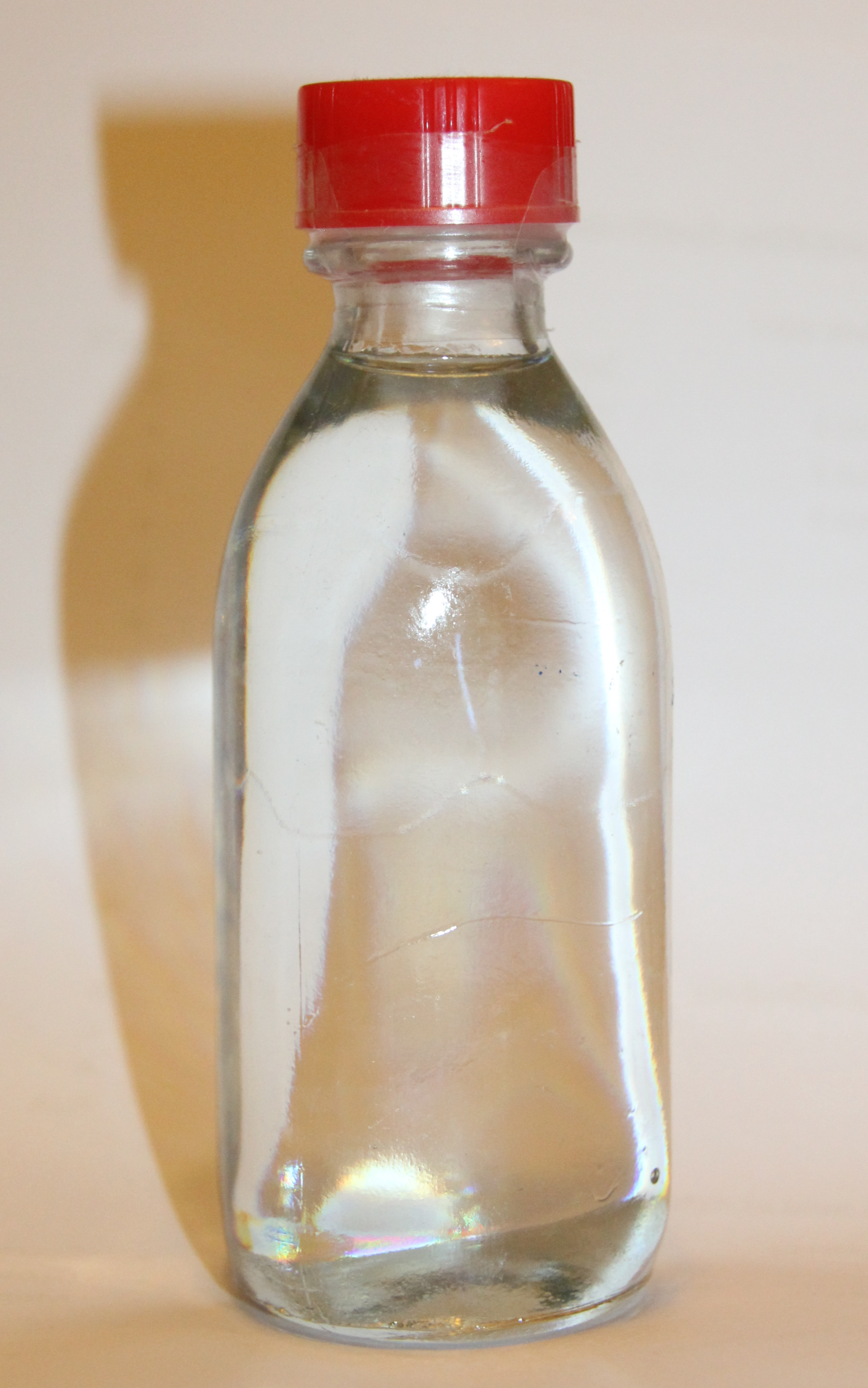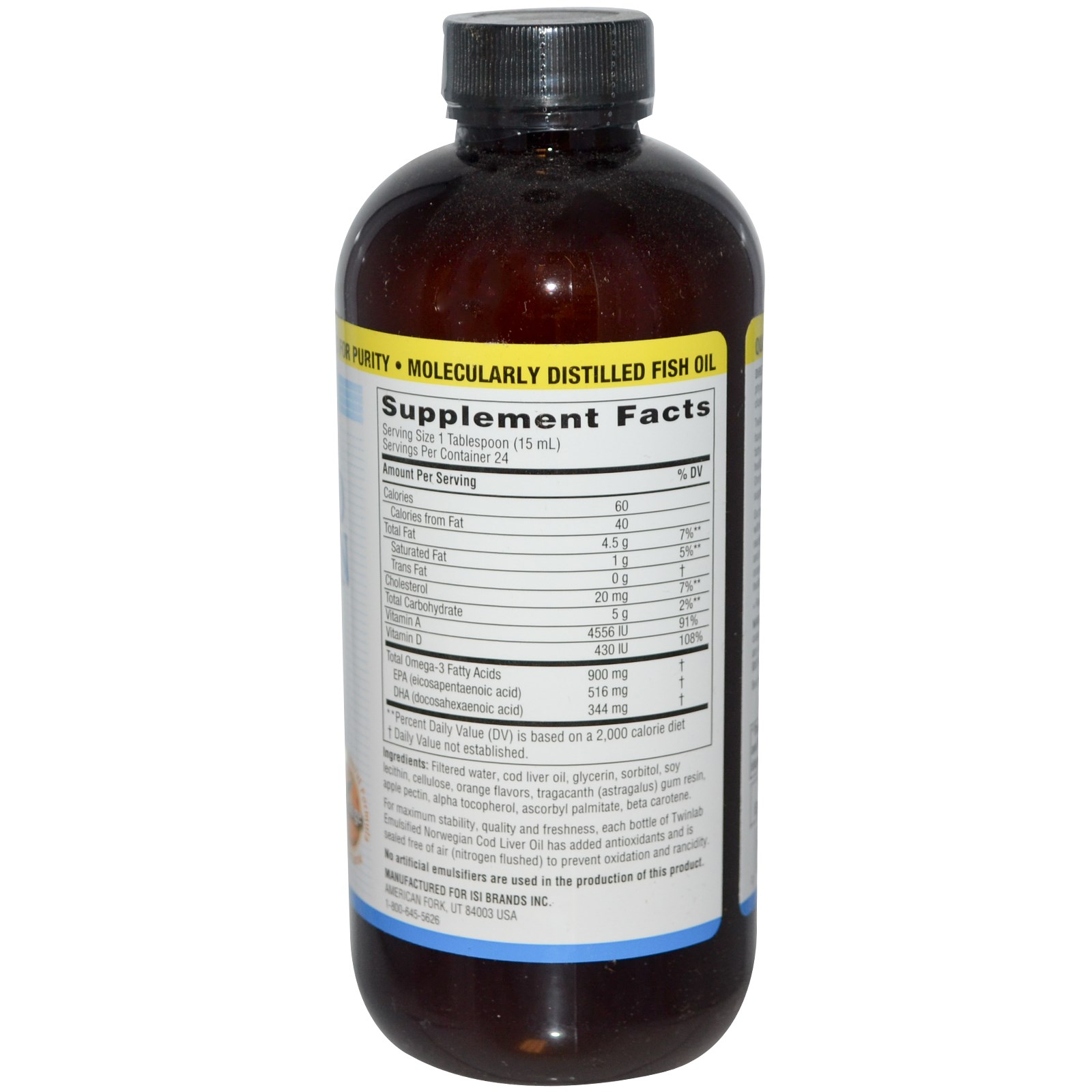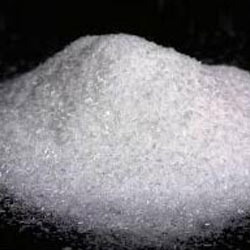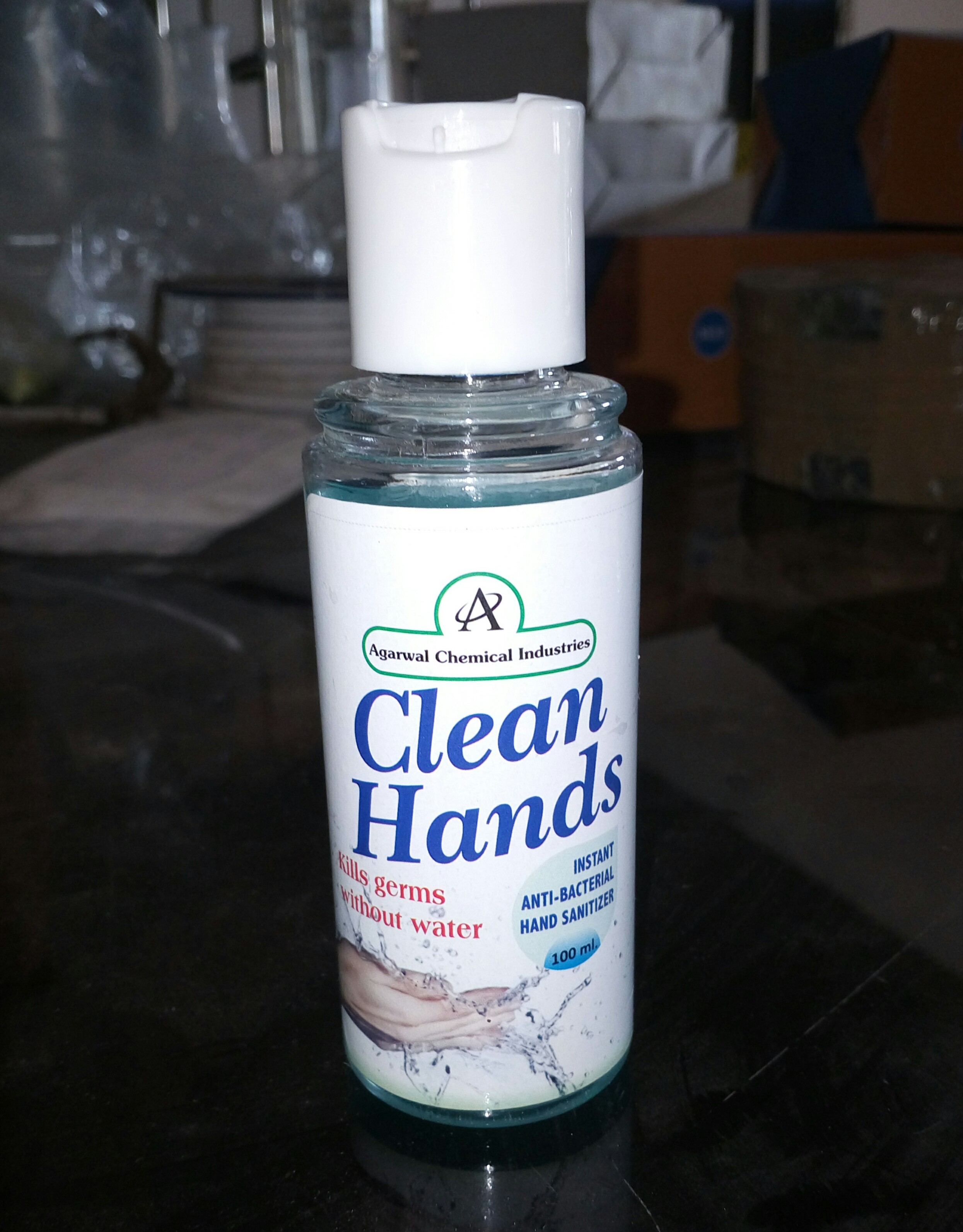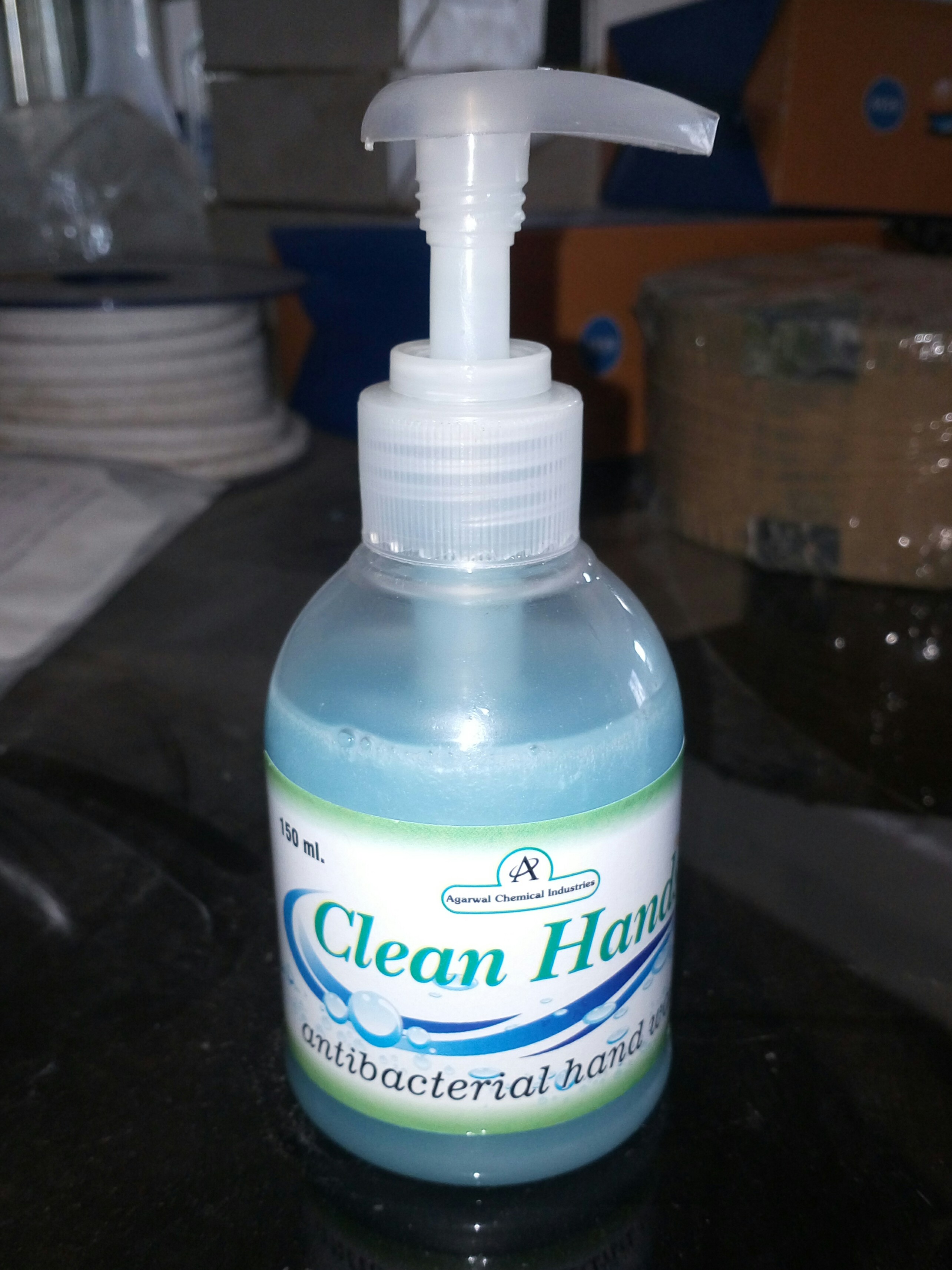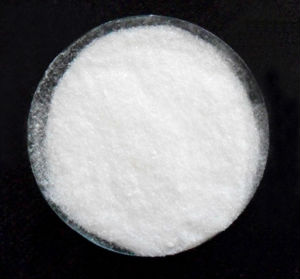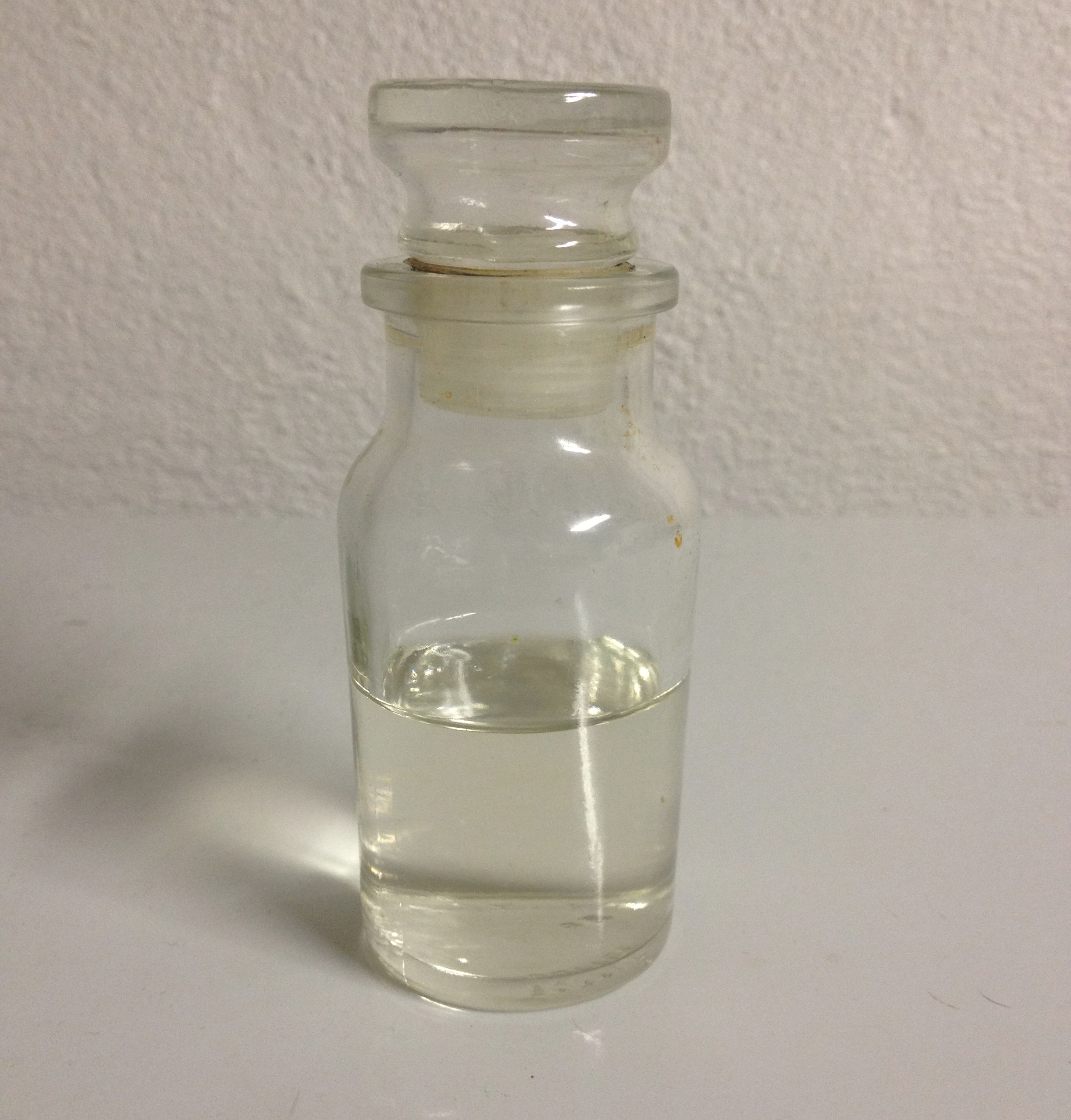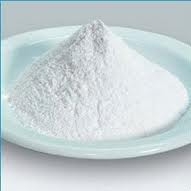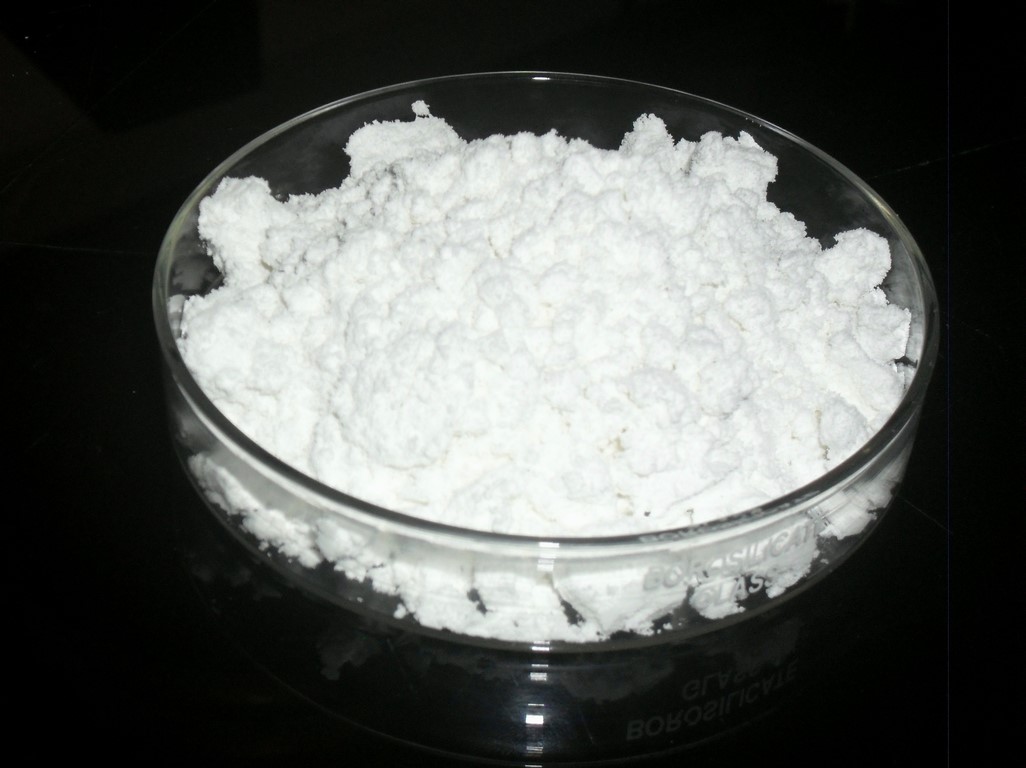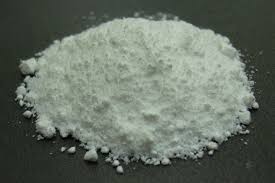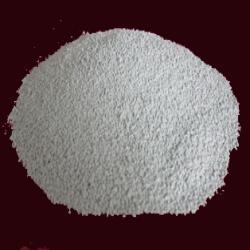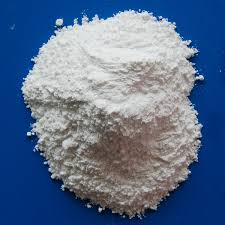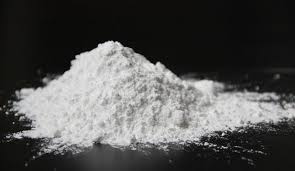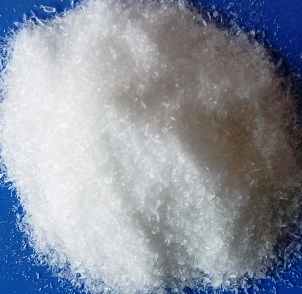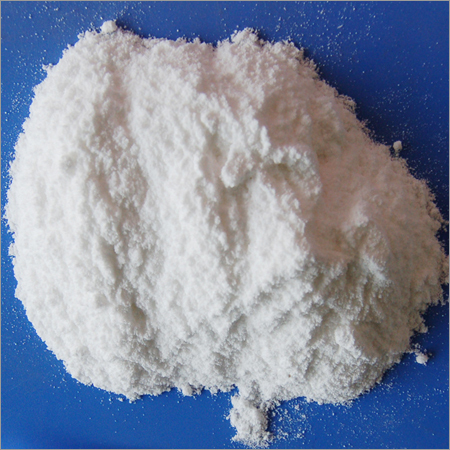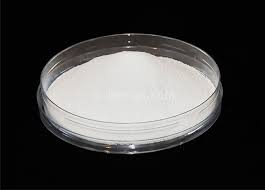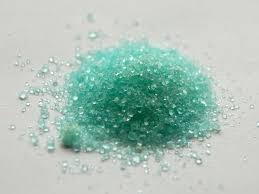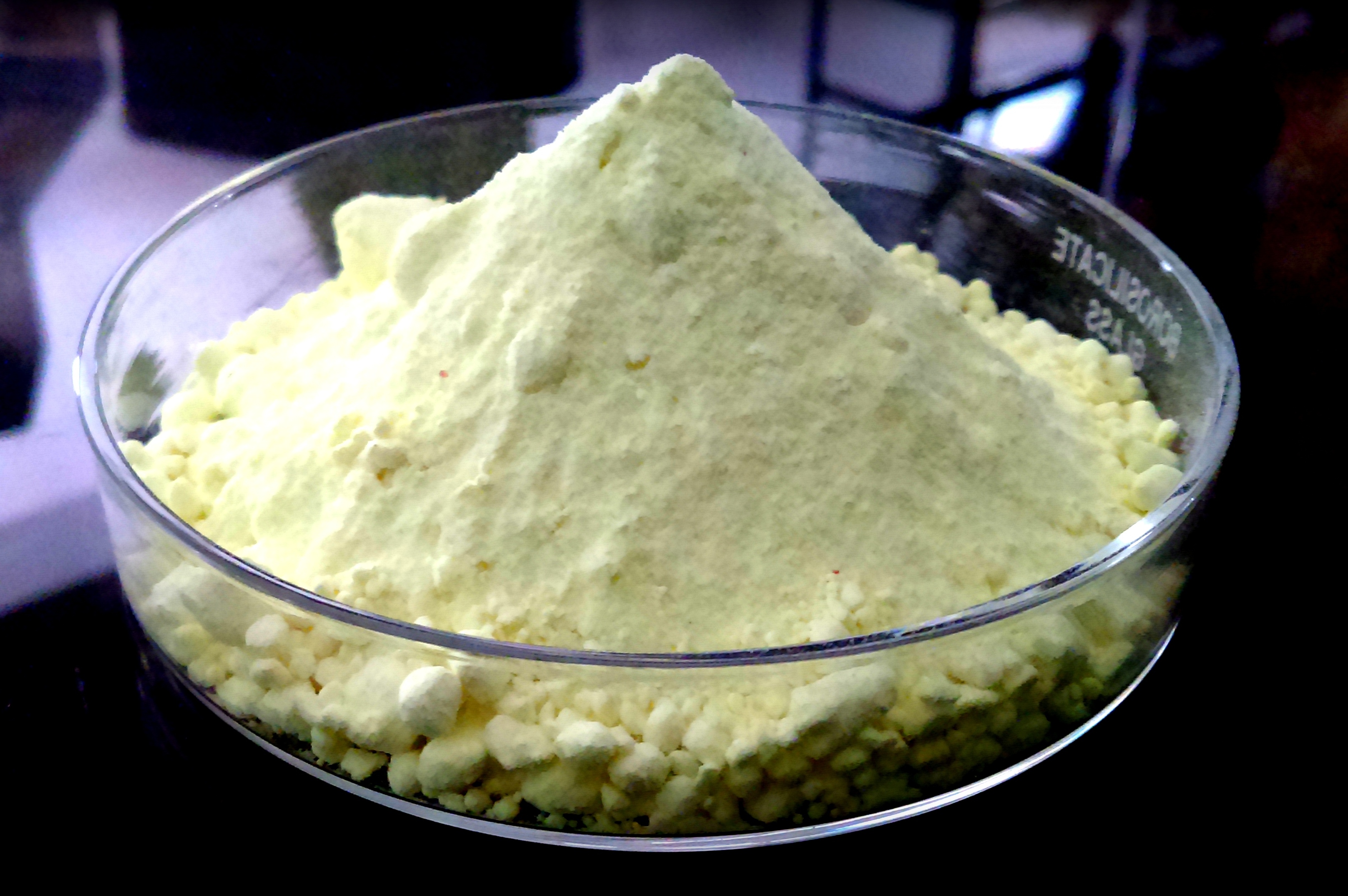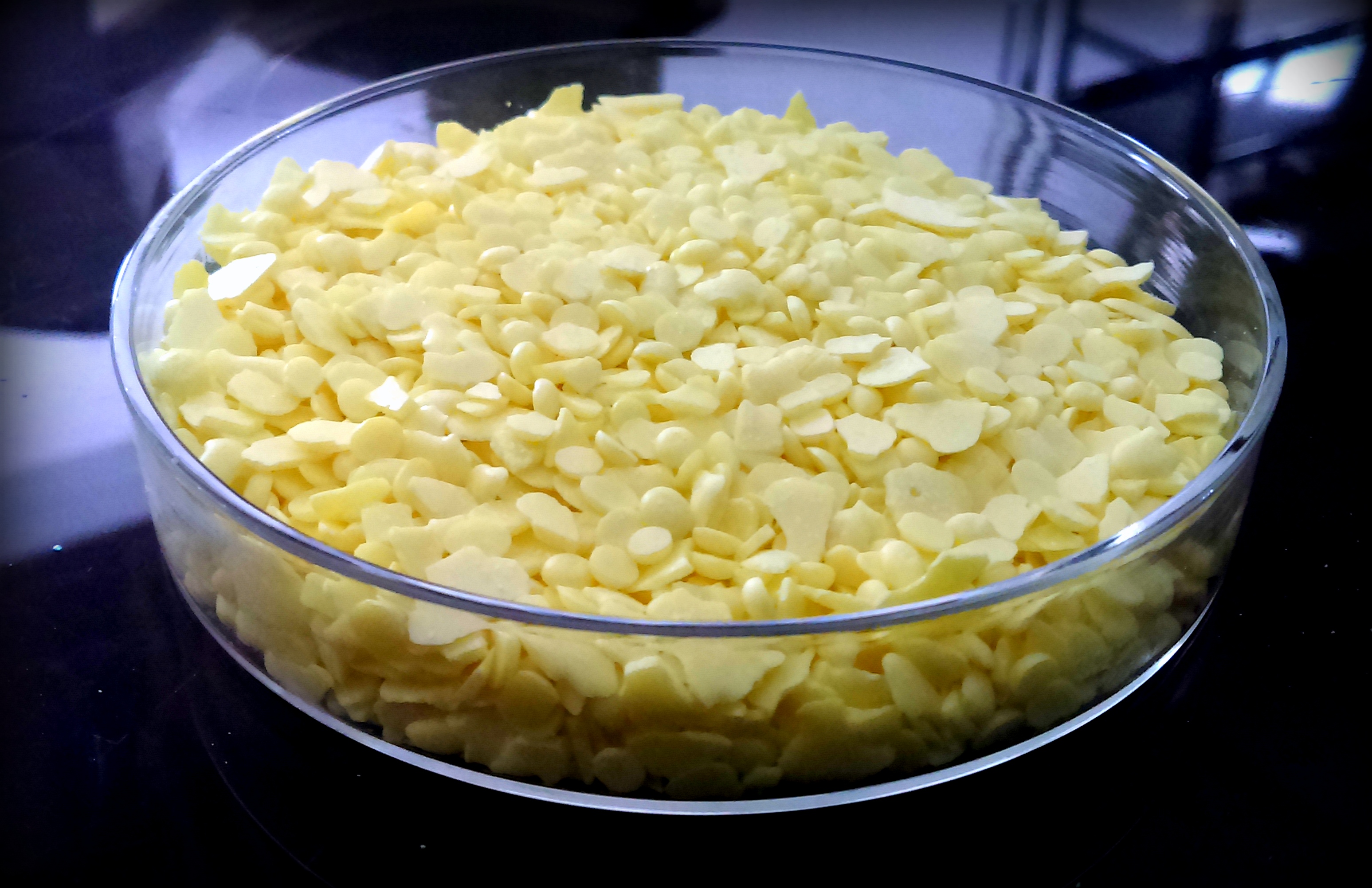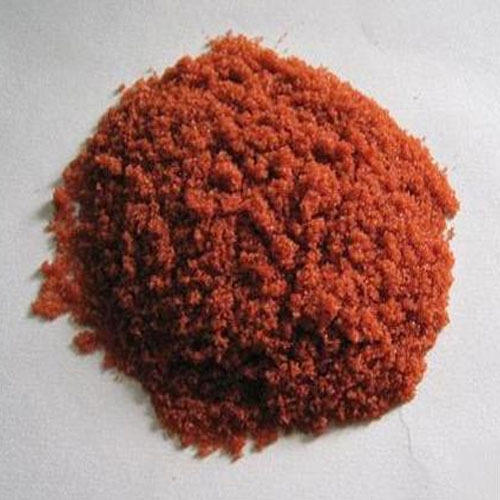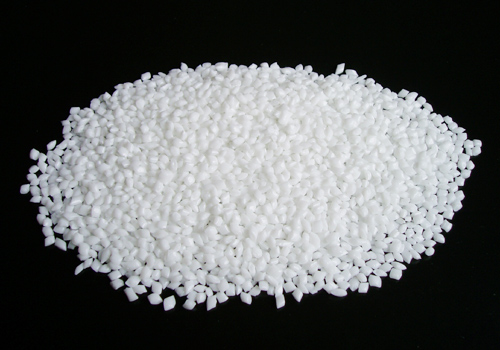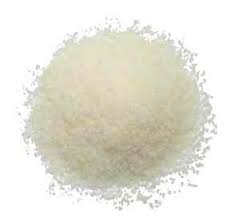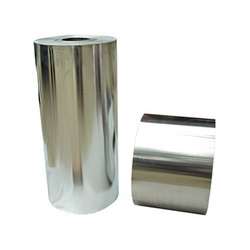Potassium Nitrate
Chemical Formula: KNO3
CAS No.: 7757-79-1
Discription:
Potassium nitrate is a white to dirty gray crystalline solid. Water soluble. Noncombustible, but accelerates the burning of combustible materials. If large quantities are involved in fire or the combustible material is finely divided an explosion may result. May explode under prolonged exposure to heat or fire. Toxic oxides of nitrogen are produced in fires. Used in solid propellants, explosives, fertilizers.
Potassium nitrate (salt petre) is widely used as a thickening agent in soups and stews such as Okrasoup. It is also used to soften food and reduce cooking time when boiling beans and tough meat. Salt petre is also an essential ingredient in making special porridges such as kunun kanwa literally translated from the Hausa language as ‘salt petre porridge’.
Chemical formula :NaCl
CAS No. : 7647-14-5
Description :
Sodium Chloride is a metal halide composed of sodium and chloride with sodium and chloride replacement capabilities. When depleted in the body, sodium must be replaced in order to maintain intracellular osmolality, nerve conduction, muscle contraction and normal renal function.
Chemical Formula: NH4Cl
CAS No. 12125-02-9
Description:
Ammonium chloride, an inorganic compound with the formula NH4Cl, is a white crystalline salt, highly soluble in water. Solutions of ammonium chloride are mildly acidic. Sal ammoniac is a name of the natural, mineralogical form of ammonium chloride. The mineral is commonly formed on burning coal dumps, due to condensation of coal-derived gases. It is also found around some types of volcanic vents. It is used as a flavouring agent in some types of liquorice. It is the product from the reaction of hydrochloric acid and ammonia.
Chemical Formula: MnSO4
CAS No. 7785-87-7
Description:
Manganese sulfate usually refers to the inorganic compound with the formula MnSO4(H2O). This pale pink deliquescent solid is a commercially significant manganese salt. Approximately 260 thousand tonnes of manganese sulfate were produced worldwide in 2005. It is the precursor to manganese metal and many other chemical compounds. Mn-deficient soil is remediated with this salt.
Chemical Formula: K2SO4
CAS No. 7778-80-5
Description:
Potassium sulfate (K2SO4) (in British English potassium sulphate, also called sulphate of potash, arcanite, or archaically known as potash of sulfur) is a non-flammable white crystalline salt which is soluble in water. The chemical is commonly used in fertilizers, providing both potassium and sulfur.
Chemical formula : KIO3
CAS No. : 7758-05-6
Description : Potassium Iodate is an oxidizing agent and as such it can cause fires if in contact with combustible materials or reducing agents. It can be prepared by reacting a potassium-containing base such as potassium hydroxide with iodic acid. Potassium iodate is sometimes used for iodination of table salt to prevent iodine deficiency.
Chemical Formula: KI
CAS No. 7681-11-0
Description:
Potassium Iodide is a metal halide composed of potassium and iodide with thyroid protecting and expectorant properties. Potassium iodide can block absorption of radioactive iodine by the thyroid gland through flooding the thyroid with non-radioactive iodine and preventing intake of radioactive molecules, thereby protecting the thyroid from cancer causing radiation. In addition, this agent acts as an expectorant by increasing secretion of respiratory fluids resulting in decreased mucus viscosity.
Chemical formula :K2CO3
CAS No. :584-08-7
Description :
Potassium carbonate (K2CO3) is a white salt, soluble in water (insoluble in ethanol[2]), which forms a strongly alkaline solution. It can be made as the product of potassium hydroxide’s absorbent reaction with carbon dioxide. It is deliquescent, often appearing a damp or wet solid. Potassium carbonate is used in the production of soap and glass.
Chemical Formula: C35H49O29
CAS No. 11138-66-2
Description:
Xantham gum is a polysaccharide secreted by thebacterium Xanthomonas campestris,[2] used as a food additive andrheology modifier,[3] commonly used as a food thickening agent (in salad dressings, for example) and a stabilizer (in cosmetic products, for example, to prevent ingredients from separating). It is composed of pentasaccharide repeat units, comprising glucose, mannose, andglucuronic acid in the molar ratio 2.0:2.0:1.0.[4] It is produced by the fermentation of glucose, sucrose, or lactose. After a fermentation period, the polysaccharide is precipitated from a growth medium with isopropyl alcohol, dried, and ground into a fine powder. Later, it is added to a liquid medium to form the gum.
Chemical formula :CaCO3
CAS No. :471-34-1
Description :
Calcium carbonate is a chemical compound with the formula CaCO3. It is formed by three main elements: carbon, oxygen and calcium. It is a common substance found in rocks in all parts of the world, and is the main component of shells of marine organisms, snails, coal balls, pearls, and eggshells. Calcium carbonate is the active ingredient in agricultural lime, and is created when calcium ions in hard water react with carbonate ions creating limescale. It is commonly used medicinally as a calcium supplement or as an antacid, but excessive consumption can be hazardous.
Chemical formula : CaCl2
CAS No. :10043-52-4
Description :
Calcium chloride (chemical formula CaCl2) is the ionic compound of calcium and chlorine. It is a salt that behaves as a typical ionic halide, being solid at room temperature and highly soluble in water. Common applications include brine for refrigeration plants, ice and dust control on roads, and desiccation. Because of its hygroscopic nature, attracting and holding water, anhydrous calcium chloride must be kept in airtight containers.
Chemical formula : H3O4P
CAS No. :7664-38-2
Description :
Phosphoric Acid is a colorless, odorless phosphorus-containing inorganic acid. Phosphoric acid is a sequestering agent which binds many divalent cations, including Fe++, Cu++, Ca++, and Mg++. Phosphoric acid is used in dentistry and orthodontics as an etching solution, to clean and roughen the surfaces of teeth where dental appliances or fillings will be placed. In addition, phosphoric acid is a constituent in bone and teeth, and plays a role in many metabolic processes.
Chemical formula :C7H6O
CAS No. :100-52-7
Description :
Benz aldehyde (C6H5CHO) is an organic compound consisting of a benzene ring with a formyl substituent. It is the simplest aromatic aldehyde and one of the most industrially useful. This colorless liquid has a characteristic pleasant almond-like odor. In fact, Benz aldehyde is the primary component of bitter almond oil and can be extracted from a number of other natural sources.
Chemical formula :C7H8O
CAS No. :100-51-6
Description :
Benzyl alcohol is an aromatic alcohol with the formula C6H5CH2OH. The benzyl group is often abbreviated “Bn” (not to be confused with “Bz” which is used for benzoyl), thus benzyl alcohol is denoted as BnOH. Benzyl alcohol is a colorless liquid with a mild pleasant aromatic odor. It is a useful solvent due to its polarity, low toxicity, and low vapor pressure. Benzyl alcohol is partially soluble in water (4 g/100 mL) and completely miscible in alcohols and diethyl ether.
Chemical Formula: C19H19N7O6
CAS No. 59-30-3
Description:
Folic Acid is a collective term for pteroylglutamic acids and their oligoglutamic acid conjugates. As a natural water-soluble substance, folic acid is involved in carbon transfer reactions of amino acid metabolism, in addition to purine and pyrimidine synthesis, and is essential for hematopoiesis and red blood cell production.
Chemical formula :SiO2
CAS No. : 112926-00-8
Description :
Silica gel is a granular, vitreous, porous form of silicon dioxide made synthetically from sodium silicate. Silica gel is tough and hard; it is more solid than common household gels like gelatin or agar. It is a naturally occurring mineral that is purified and processed into either granular or beaded form. As a desiccant, it has an average pore size of 2.4 nanometers and has a strong affinity for water molecules.
Chemical Formula: C6H8O6
CAS No. 50-81-7
Description:
A six carbon compound related to glucose. It is found naturally in citrus fruits and many vegetables. Ascorbic acid is an essential nutrient in human diets, and necessary to maintain connective tissue and bone. Its biologically active form, vitamin C, functions as a reducing agent and coenzyme in several metabolic pathways. Vitamin C is considered an antioxidant
Chemical Formula: KCl
CAS No. 7447-40-7
Description:
Potassium Chloride is a metal halide composed of potassium and chloride. Potassium maintains intracellular tonicity, is required for nerve conduction, cardiac, skeletal and smooth muscle contraction, production of energy, the synthesis of nucleic acids, maintenance of blood pressure and normal renal function. This agent has potential antihypertensive effects and when taken as a nutritional supplement may prevent hypokalemia.
Chemical Formula: C8H8O3
CAS No. 99-76-3
Molecular Weight 152.15
Description:
Methyl paraben serves as a pheromone for a variety of insects and is a component of queen mandibular pheromone. Some plants produce methyl paraben, example thale cress.
Methyl paraben is an anti-fungal agent often used in a variety of cosmetics and personal-care products. It is also used as a food preservative and has the E number E218.
Methyl paraben is commonly used as a fungicide in Drosophila food media. To Drosophila, methyl paraben is toxic at higher concentrations, has an estrogenic effect, and slows the growth rate in the larval and pupal stages at lower concentrations.
Chemical Formula: C63H91CoN13O14P
CAS No. 13422-55-4
Description:
Methyl cobalamin (mecobalamin, MeCbl, or MeB12) is a cobalamin, a form of vitamin. It differs from cyan cobalamin in that the cyanide is replaced by amethyl group.[1] Methylcobalamin features an octahedral cobalt(III) center. Methylcobalamin can be obtained as bright red crystals.[2] From the perspective of coordination chemistry, methylcobalamin is notable as a rare example of a compound that contains metal-alkyl bonds. Nickel-methyl intermediates have been proposed for the final step of methanogenesis.
Methylcobalamin is equivalent physiologically to vitamin B12, and can be used to prevent or treat pathology arising from a lack of vitamin B12 (vitamin B12 deficiency), such as pernicious anemia.
Methylcobalamin is also used in the treatment of neuropathy, diabetic, and as a preliminary treatment for amyotrophic lateral
Chemical Formula: C63H88CoN14O14P
CAS No. 68-19-9
Description:
Vitamin B12 is very stable at high temperatures just if pH is ranged from 4.5 to 5.0 while the strong acidic and highly alkaline environment loses its vitamin activity.
This vitamin is rapidly degraded in the light, and therefore it is necessary to keep it in the dark. Vitamin B12 is negatively affected by alcohol, sleeping pills, estrogen, etc.
Vitamin B12 is well soluble in water, ethanol and methanol.
Under the term vitamin B12 several compounds that are similar in chemical structure are included. There are classified: cyanocobalamin, oxycobalamin, nitrocobalamin, aquacobalamin, etc.
In the structure of the vitamin B12 element cobalt is included. In the isolation of vitamin B12 we can get its cyanocobalamin derivative in which structure enters cyanide group, linked to an atom of cobalt.
Chemical Formula: C38H72N2O12
CAS No. 83905-01-5
Description:
Azithromycin is a semi-synthetic macrolide antibiotic structurally related to ERYTHROMYCIN. It has been used in the treatment of Mycobacterium avium intracellulare infections, toxoplasmosis, and cryptosporidiosis.
Azithromycin anhydrous is a Macrolide Antimicrobial. The chemical classification of azithromycin anhydrous is Macrolides.
Chemical Formula: C22H43N5O13
CAS No. 37517-28-5
Description:
Amikacin is a broad-spectrum antibiotic derived from KANAMYCIN. It is reno- and oto-toxic like the other aminoglycoside antibiotics
Amikacin is a broad-spectrum semi-synthetic aminoglycoside antibiotic, derived from kanamycin with antimicrobial property. Amikacin irreversibly binds to the bacterial 30S ribosomal subunit, specifically locking 16S rRNA and S12 protein within the 30S subunit. This leads to interference with translational initiation complex and misreading of mRNA, thereby hampering protein synthesis and resulting in bactericidal effect. This agent is usually used in short-term treatment of serious infections due to susceptible strains of Gram-negative bacteria.
Chemical Formula: C48H74O14
CAS No. 70288-86-7
Description:
IVERMECTIN is a mixture of mostly avermectin H2B1a (RN 71827-03-7) with some avermectin H2B1b (RN 70209-81-3), which are macrolides from STREPTOMYCES avermitilis. It binds glutamate-gated chloride channel to cause increased permeability and hyperpolarization of nerve and muscle cells. It also interacts with other CHLORIDE CHANNELS. It is a broad spectrum antiparasitic that is active against microfilariae of ONCHOCERCA VOLVULUS but not the adult form
Chemical Formula: C35H36ClNO3S
CAS No. 158966-92-8
Description:
Montelukast is a leukotriene receptor antagonist (LTRA) used for the maintenance treatment of asthma and to relieve symptoms of seasonal allergies. It is usually administered orally. Montelukast blocks the action of leukotriene D4 on the cysteinyl leukotriene receptor CysLT1 in the lungs and bronchial tubes by binding to it. This reduces the bronchoconstriction otherwise caused by the leukotriene, and results in less inflammation. Because of its method of operation, it is not useful for the treatment of acute asthma attacks. Again because of its very specific locus of operation, it does not interact with other allergy medications such as theophylline
Chemical Formula: Cu2SO4
CAS No. 7758-98-7
Description:
Copper sulfate is a sulfate salt of copper. It is a potent emetic and is used as an antidote for poisoning by phosphorus. It also can be used to prevent the growth of algae.
Copper (II) sulfate, also known as cupric sulfate or copper sulphate, is the inorganic compound with the chemical formula CuSO4. This salt exists as a series of compounds that differ in their degree of hydration. The anhydrous form is a pale green or gray-white powder, whereas the pentahydrate
Chemical Formula: C18H20FN3O4
CAS No. 82419-36-1
Description:
Ofloxacin is a fluoroquinolone antibacterial antibiotic. Ofloxacin binds to and inhibits bacterial topoisomerase II (DNA gyrase) and topoisomerase IV, enzymes involved in DNA replication and repair, resulting in cell death in sensitive bacterial species.
Chemical Formula: C7H5NO3S
CAS No. 81-07-2
Description:
Saccharin is an artificial sweetener. The basic substance, benzoic sulfilimine, has effectively no food energy and is much sweeter than sucrose, but has a bitter or metallic aftertaste, especially at high concentrations. It is used to sweeten products such as drinks, candies, cookies, medicines, and toothpaste
Chemical Formula: C8H9NO2
CAS No. 103-90-2
Description:
Acetaminophen is a p-aminophenol derivative with analgesic and antipyretic activities. Although the exact mechanism through which acetaminophen exert its effects has yet to be fully determined, acetaminophen may inhibit the nitric oxide (NO) pathway mediated by a variety of neurotransmitter receptors including N-methyl-D-aspartate (NMDA) and substance P, resulting in elevation of the pain threshold. The antipyretic activity may result from inhibition of prostaglandin synthesis and release in the central nervous system (CNS) and prostaglandin-mediated effects on the heat-regulating center in the anterior hypothalamus.
Chemical formula :H2SO4
CAS No. :7664-93-9
Description :
Sulfuric acid is a colorless oily liquid. It is soluble in water with release of heat. It is corrosive to metals and tissue. It will char wood and most other organic matter on contact, but is unlikely to cause a fire. Density 15 lb / gal. Long term exposure to low concentrations or short term exposure to high concentrations can result in adverse health effects from inhalation. It is used to make fertilizers and other chemicals, in petroleum refining, in iron and steel production, and for many other uses. Rate of onset: Immediate Persistence: Hours, days Odor threshold: Source/use/other hazard: Battery/dyes/paper/glue/metals industries; volcanic gas; toxic fumes when heated.
Chemical formula :CaHPO4
CAS No. :7757-93-9
Description :
Dibasic calcium phosphate is mainly used as a dietary supplement in prepared breakfast cereals, dog treats, enriched flour, and noodle products. It is also used as a tableting agent in some pharmaceutical preparations, including some products meant to eliminate body odor. Dibasic calcium phosphate is also found in some dietary calcium supplements (e.g. Bonexcin). It is used in poultry feed. It is also used in some toothpastes as a tartar control agent.
Power-Cal-AD 3 (Milk Booster)
Composition: Each 100 ml contains:
- Calcium: 1750 mg
- Phosphorus: 875 mg
- Vitamin A: 8000 I.U.
- Vitamin D 3: 6000 I.U.
- Vitamin B 12: 100 mcg
- Cobalt: 50 mg
- Shatavari: 500 mg
- Jivanti: 500 mg
- Colour approved food colour (Erythrosin): 6 mg
- Flavor: 200 mg
- Nutria Sweet: 200 mg
Indication & Benefits:
- Increases milk production & optimizes fat level in milk in cattle.
- Improves skeletal and muscular strength in cattle.
- Prevents milk fever and rickets in cattle.
- Participating in the clothing of blood.
- Phosphorus is required for better growth and better fertility.
- Increases disease resistance & heals any cuts & wounds quickly in poultry & cattle.
- Improves overall growth & hatchability in broilers, breeders & layers.
- Improves egg production and egg shell strength in poultry.
- Prevent leg weakness in broilers, breeders & layers.
- Making stronger bones & prevent bones related disease in cattle and poultry.
Dosage:
- Cattle: 100 ml daily.
- Calves: 20 ml twice daily.
- Poultry: 100 ml daily for 100 Birds
- Packaging: 1Ltr and 5Ltr.
Chemical formula :C3H8O3
CAS No. :56-81-5
Description :
Glycerol is used in medical and pharmaceutical and personal care preparations, mainly as a means of improving smoothness, providing lubrication and as a humectant. It is found in allergen immunotherapies, cough syrups, elixirs and expectorants, toothpaste, mouthwashes, skin care products, shaving cream, hair care products, soaps and water-based personal lubricants.
Chemical formula :CHCl3
CAS No. : 67-66-3
Description :
Chloroform is an organic compound with formula CHCl3. It is a colorless, sweet-smelling, dense liquid that is produced on a large scale as a precursor to PTFE and refrigerants, but the latter application is declining.[3] It is one of the four chloromethanes and a trihalomethane.
Chemical formula :C64H124O26
CAS No. : 9005-65-6
Description :
Polysorbate 80 is an excipient that is used to stabilize aqueous formulations of medications for parenteral administration, and used as an emulsifier in the manufacture of the popular antiarrhythmic amiodarone.[6] It is also used as an excipient in some European and Canadian influenza vaccines.[7] Influenza vaccines contain 25 μg of polysorbate 80 per dose.[7] It is also used in the culture of Mycobacterium tuberculosis in Middlebrook 7H9 broth. It is also used as an emulsifier in the estrogen-regulating drug Estrasorb.
Chemical formula :
CAS No. :
Description :
Vitamin D refers to a group of fat-soluble secosteroids responsible for enhancing intestinal absorption of calcium, iron, magnesium, phosphate and zinc. In humans, the most important compounds in this group are vitamin D3 (also known as cholecalciferol) and vitamin D2 (ergocalciferol).
Chemical formula :C6H8O7
CAS No. :77-92-9
Description :
Citric acid is a weak organic acid with the formula C6H8O7. It is a natural preservative which is present in citrus fruits. It is also used to add an acidic or sour taste to foods and drinks. In biochemistry, the conjugate base of citric acid, citrate, is important as an intermediate in the citric acid cycle, which occurs in the metabolism of all aerobic organisms. It consists of 3 carboxyl (R-COOH) groups.
Chemical formula :C8H8O3
CAS No. :119-36-8
Description :
Methyl salicylate (oil of wintergreen or wintergreen oil) is an organic ester naturally produced by many species of plants, particularly wintergreens. It is also synthetically produced, used as a fragrance, in foods and beverages, and in liniments.
Description:
Cod liver oil is a nutritional supplement derived from liver of cod fish (Gadidae).
Though similar in composition to fish oil, cod liver oil has higher concentrations of vitamins A and D. According to the United States Department of Agriculture, atablespoon (4 drams or 15 ml) of cod liver oil contains 4080 μg of retinol (vitamin A) and 34 μg of vitamin D.The Dietary Reference Intake of vitamin A is 900 μg per day for adult men and 700 μg per day for women, while that for vitamin D is 15 μg per day. The “tolerable upper intake levels” are 3000 μg/day and 100 μg/day respectively, so people consuming cod liver oil as a source of omega-3 fatty acids should pay attention to how much vitamin A and vitamin D this adds to their diet.
Rich in omega-3 fatty acids, cod liver oil may be beneficial in secondary prophylaxis after a heart attack. Diets supplemented with cod liver oil have also been demonstrated to have beneficial effects on psoriasis
Chemical Formula: FeSO4
CAS No.: 7720-78-7
Description:
These Insoluble Saccharin chemicals are extensively used for supari and its allied products. Insoluble Saccharin is carefully tested on different yardsticks to ensure its flawless quality. It is free from any impurities and available in different grades as per the requirements of the customers.
Clean Hands – Hand Sanitizer
- CLEAN Hands – Hand Sanitizer 100% Natural Hand Sanitizer, the safe and easy way to protect your hands from germs and help you stay healthy
- Protection on the go without soap. CLEAN Hands Hand Sanitizer is effective at killing 99.99% of most common germs and convenient, gentle and a pleasure to use. The dispensers and bottles could be placed anywhere, so hand hygiene was no longer restricted to the confines of a sink. And people enjoyed using CLEAN Hands Hand Sanitizer because it is refreshing and gentle.
- Healthcare workers needed to kill germs on their hands when they couldn’t get to soap and water. And restaurant operators needed extra germ-fighting protection to reduce the risk of food contamination
- People who used it at work also thought it would be great to use when they were at home or on the go.
- Keeps you and your family protected everywhere.
- It contains Coleus vittiveroides, Coriandrum sativum Linn, Citrus limon burm.f, Vetiveria zizanioides(Linn), Azadirachta indica A. Juss, Alcohol & gel Base q.s
- Use Anytime, anywhere – Car, Office, Picnic, Nappy Change, Travel, Sports, etc. Leaves the Hands refresh.
- Use as often as required.
Clean Hands – Hand Wash
Clean Hands – Hand Wash is a remarkable product in personal hygiene. The product has been manufactured using high grade ingredients that provide complete immunity from harmful germs and microorganisms. The bottle tag is neatly designed with all the technical specification about the production and ingredients composition is neatly inscribed.
Features
- Keep moistened pH slight acidic formula, richly contain the natural aloe essence, fully moistening and protecting hands
- Provides broad spectrum antimicrobial activity form germ free hand wash
- Antibacterial effect Contains effective antibacterial ingredient which is
- Stronger Kills up to 10 times the germs of ordinary liquid soap
- Faster Start to kill germs in less than 15 seconds
- Better Twice the moisturization of Anti-Bacterial soap
- Premium rich lathering liquid hand was with mild, yet effective skin cleansers
- Gently clean and washes away germs without leaving hands feeling dry
- Fresh relaxing fragrance with an aura of peace and tranquility
- Convenient pump bottle
Products Usage: This is suitable for entire family as well for public places, protects the hands against
Directions of use : Moisten hands and apply liquid hand wash. Rub your hand vigorously together for at least 15 to 20 seconds and then rinse well.
Chemical formula :C2H3NaO2
CAS No. :
Description :
Sodium acetate is used in the textile industry to neutralize sulfuric acid waste streams and also as a photoresist while using aniline dyes. It is also a pickling agent in chrome tanning and helps to impede vulcanization of chloroprene in synthetic rubber production. In processing cotton for disposable cotton pads, sodium acetate is used to eliminate the buildup of static electricity.
Chemical Formula: C35H49O29
CAS No. 11138-66-2
Description:
Xantham gum is a polysaccharide secreted by thebacterium Xanthomonas campestris,[2] used as a food additive andrheology modifier,[3] commonly used as a food thickening agent (in salad dressings, for example) and a stabilizer (in cosmetic products, for example, to prevent ingredients from separating). It is composed of pentasaccharide repeat units, comprising glucose, mannose, andglucuronic acid in the molar ratio 2.0:2.0:1.0.[4] It is produced by the fermentation of glucose, sucrose, or lactose. After a fermentation period, the polysaccharide is precipitated from a growth medium with isopropyl alcohol, dried, and ground into a fine powder. Later, it is added to a liquid medium to form the gum.
Chemical formula :C6H6N2O
CAS No. :98-92-0
Description :
Niacinamide has anti-inflammatory actions. These may be of benefit to patients with inflammatory skin conditions. These conditions include acne vulgaris, and the compound can suppress antigen-induced, lymphocytic transformation and inhibit 3′,5′-cyclic-AMP phosphodiesterase. Niacinamide has demonstrated the ability to block the inflammatory actions of iodides known to precipitate or exacerbate inflammatory acne.
Chemical formula :ZnSO4
CAS No. :7733-02-0
Description :
Zinc sulfate is the inorganic compound with the formula ZnSO4 as well as any of three hydrates. It was historically known as “white vitriol”. All of the various forms are colorless solids. The heptahydrate is commonly encountered.It is on the World Health Organization’s List of Essential Medicines, a list of the most important medication needed in a basic health system.
Chemical formula :MgO
CAS No. :1309-48-4
Description :
A refractory material is one that is physically and chemically stable at high temperatures. “By far the largest consumer of magnesia worldwide is the refractory industry, which consumed about 56 % of the magnesia in the United States in 2004, the remaining 44 % being used in agricultural, chemical, construction, environmental, and other industrial applications.
Chemical formula :NaH2PO4
CAS No. :7558-80-7
Description :
Monosodium phosphate (MSP), also known as anhydrous monobasic sodium phosphate and sodium dihydrogen phosphate, is an inorganic compound of sodium with dihydrogen phosphate (H2PO4−) anion. One of many sodium phosphates, it is a common industrial chemical. It exists as an anhydrous salt, as well as mono- and dihydrates.
Chemical formula :Na3O4P
CAS No. :7601-54-9
Description :
Trisodium phosphate (TSP) is the inorganic compound with the chemical formula Na3PO4. It is a white, granular or crystalline solid, highly soluble in water producing an alkaline solution. TSPs are used as cleaning agent, lubricant, food additive, stain remover and degreaser.
Chemical formula :C6H10CaO4
CAS No. :4075-81-4
Description :
Calcium propionate is an organic salt formed by the reaction of calcium hydroxide with propionic acid (also known as propanoic acid). Its chemical formula is Ca(OOCCH2CH3)2. The compound occurs in either crystalline or powder form. It is soluble in water and only very slightly soluble in alcohol.
Chemical formula :C6H12O6
CAS No. :50-99-7
Description :
Glucose is a carbohydrate, and is the most important simple sugar in human metabolism. Glucose is called a simple sugar or a monosaccharide because it is one of the smallest units which has the characteristics of this class of carbohydrates. Glucose is also sometimes called dextrose. Corn syrup is primarily glucose. Glucose is one of the primary molecules which serve as energy sources for plants and animals. It is found in the sap of plants, and is found in the human bloodstream where it is referred to as “blood sugar”. The normal concentration of glucose in the blood is about 0.1%, but it becomes much higher in persons suffering from diabetes.
Chemical formula :FeO4S
CAS No. :7720-78-7
Description :
Ferrous sulfate is a type of iron. You normally get iron from the foods you eat. In your body, iron becomes a part of your hemoglobin and myoglobin. Hemoglobin carries oxygen through your blood to tissues and organs. Myoglobin helps your muscle cells store oxygen.Ferrous Sulfate is an essential body mineral. Ferrous sulfate is used to treat iron deficiency anemia (a lack of red blood cells caused by having too little iron in the body).Ferrous sulfate may also be used for other purposes not listed in this medication guide.
Chemical formula :CoSO4
CAS No. :10124-43-3
Description :
Cobalt(II) sulphate is an inorganic compound with the formula CoSO4. It is the divalent cobalt salt of sulfuric acid. The most common form of cobalt sulfate are the hydrates CoSO4.7H2O and CoSO4.H2O. Cobalt(II) sulphate and its hydrates are some of the most commonly available salts of cobalt.
Chemical formula :Na2S2O3
CAS No. :7772-98-7
Description :
Sodium thiosulfate (Na2S2O3), also spelled sodium thiosulphate, is an inorganic compound that is typically available as the pentahydrate, Na2S2O3·5H2O. The solid is an efflorescent (loses water readily) crystalline substance that dissolves well in water. It is also called sodium hyposulfite or “hypo”
Chemical formula :
CAS No. :
Description :
Gelatin is a mixture of peptides and proteins produced by partial hydrolysis of collagen extracted from the skin, bones, and connective tissues of animals such as domesticated cattle, chicken, pigs, horses and fish. During hydrolysis, the natural molecular bonds between individual collagen strands are broken down into a form that rearranges more easily. Its chemical composition is, in many respects, closely similar to that of its parent collagen.[1] Photographic and pharmaceutical grades of gelatin are generally sourced from beef bones and pig skin.

